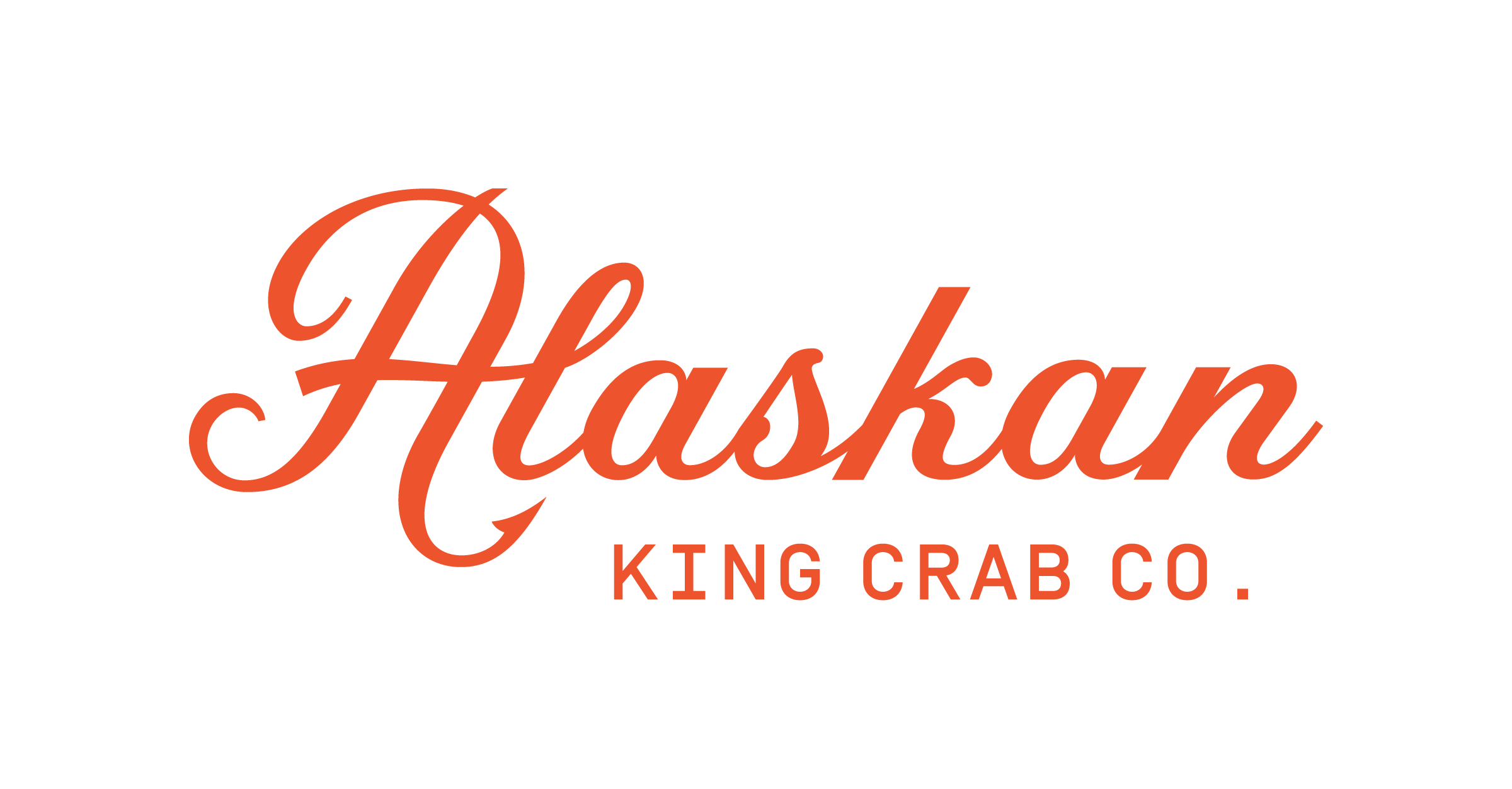Although commercial Alaska shellfishing is rated as one of the most hazardous occupations in America, it can be quite profitable for those skilled at it. To do that though, takes fortitude, experience, perseverance, and a bit of luck.
Here, we’ll explore the vessel, the crew, the location, and the conditions needed to snag Alaska king crabs.

The Fishing Vessel and Crew
For fishermen and women willing to risk the waters of the Bering Sea, a king crab boat is a home, protector, source of wealth and refuge for warmth.
These fishing vessels typically range anywhere from 50 to 300 feet in length, and they’re equipped with massive hydraulic systems for administering crab pots (which weigh up to 700 pounds!). These hydraulic systems that drop and lift the pots are also designed to withstand the freezing weather of Alaska.

A boat and its crew are typically out to sea for 3 to 4 weeks at a time before coming back to shore. But it wasn’t always that way. Up until about ten years ago, king crab fishing was conducted like a derby. Over 250 boats registered at a time to partake in 3 to 4 days of king crab fishing. However, due to the reduced stocks available, the lower wholesale price of king crab, and the danger associated with king crab fishing, the catch period has been extended in order to prevent derby-style fishing. Today, there are just around 100 boats fishing for king crab.
On deck, there are many roles that help a crab fishing vessel on its mission:
- A new crab fisher is referred to as a Greenhorn.
- A Bait Master sets bait of herring and cod in each pot to attract king crabs.
- A Pot Launcher is responsible for setting the pots when instructed by the ship’s captain.
- A Pot Retriever casts a hook to capture the pot line and then uses a pulley system to bring the pot back to the boat.
- A Chef is the dedicated person on the ship for fixing meals for the entire crew.
- Generally speaking, experienced king crab fishermen are called Deckhands.
To read more about some popular king crab fishing vessels (F/V), here are boats from the Discovery Channel show “Deadliest Catch”:
Where to Find King Crab
Outside the refuge of a crab fishing vessel lies a dangerous, freezing environment. For those who make it their career, the reward outweighs the risk and grueling work.
King crabs, primarily found in Alaska and Russian waters, each have specific habitats and regions. For instance, Blue king crabs are located near the Pribilof and St. Matthew Islands, typically at depths between 600 feet and the intertidal zone. Golden king crabs, found around the Aleutian-Adak Islands, dwell deeper, from 600 to 1,600 feet. Red king crabs, the most commercially sought after, roam over sand and silt ocean bottoms from 120 to 600 feet, with populations in places like Bristol Bay, Norton Sound, and the Gulf of Alaska. They are also less aggressive than their blue and golden counterparts.
King crabs thrive in freezing waters and are sensitive to temperature changes. Red and blue king crabs migrate up to a mile per day, shifting between shallow and deep waters annually.
Catching King Crab
Though the season will depend on the fishing guidelines or quota established for the year, king crab fishing, typically occurs from October to January. Fishermen use large, steel-framed traps called pots, which weigh 600-800 pounds each. Depending on the boat size, crews set between 150 and 300 pots.
Pots are considered to be less damaging than mobile gear because they remain in one location and don’t impact a large area of the seafloor. Also, the sand and soft sediments where crabs reside are less likely to be affected by the large king crab pots than other habitat types.

Fishermen tend to place them near ice edges, where king crabs prefer freezing temperatures. The bait, usually herring or codfish, is placed inside the pots and lowered to the seafloor using hydraulic systems. Pots are set in lines, marked by buoys above the water.
After 1-2 days, pots are hauled up, and the catch is sorted. King crabs that meet size regulations are kept in a live holding tank, while undersized crabs are returned to the water.
Commercial Restrictions
When fishing for Alaska King Crab, certain legal requirements must be met — the majority of which revolve around crab size and the fishing season. For example, only the male Alaska King Crab can be kept, and quota limits are strictly enforced. Any violator of these laws receive hefty fines in the hundreds of thousands. (Check out Alaska Commercial Fisheries for entry information.)
The reason for these regulations is to sustain the crab and fish population. The State of Alaska has also instituted minimum size and sex restrictions, vessels registration, seasons, observer requirements, and gear restrictions. Each year, crab boats are aksi given an individual quota based on prior years’ catches and the estimated biomass. Fisheries are managed by the Alaska Department of Fish and Game.
To address the needs of Alaskan crab fisheries, the North Pacific Fishery Management Council has developed a Crab Rationalization Program. The program is intended to address the conservation issues associated with the overfishing caused by derby fishing, reduce bycatch and associated discard mortality, and increase the safety of crab fishermen/women by ending the race for fish.
Did You Know? Only male king crab can be kept and sold to processors.
A King Crabbing Career
In 2006, the Bureau of Labor Statistics ranked commercial fishing as the occupation with the highest fatality rate of 142 per 100,000 individuals. Alaskan king crab fishing is over double that amount with over 300 fatalities per 100,000 individuals. Major causes of death include hypothermia or drowning. Crew members are also severely injured or killed by the heavy equipment used to catch king crab or the dangers from the ice buildup on the boats.

In recent years, however, the profession has become safer, due to the move to ban on derby-style fishing, where crews would rush to fill quotas in a few days, competing with other boats.
About 30 years ago, king crab fishing was one of the highest paying workplaces in the United States. In the early 80s during the king crab fishing boom, boat owners were making $1 to $2 million a season and deckhands were taking home $60 to $70 thousand each. Today, the structure remains similar, but the dollar amounts have changed. (You can read more about commercial values at the ADFG website.)
Deckhands get a percentage of the gross after the boat owner’s take is subtracted, which ends up averaging around 8% to 10%. Greenhorns receive a daily fixed amount based on their time on the boat. Newcomer deck hands (i.e., new boat) usually earn 5% of the adjusted gross catch.
King Crab Fishing: By the Numbers
Average seasonal quota: 15.5 million pounds of king crab
Number of boats: 125
Average pounds per boat quota: 124,000 pounds
Wholesale price per pound of king crab: $7
Average gross revenue per boat: $868,000
Boat owner payout (50% of gross): $434,000 to apply toward expenses and income
Deckhand payout (10% of adjusted gross of $434,000): $43,400
Greenhorn payout: $150 day
Becoming a king crab fisher begins with a physical exam. This is critical as physical safety will be at risk with cold temperatures, high seas and bulky equipment. Fishers will also go through a mandatory crab boat course that trains them how to work on a crab boat. Crew members are responsible for their own commercial fishing licenses — typically $60 for an Alaska resident and all the gear they will need to perform their job.
Russian King Crab Controversy
In the late 1950s, Russian scientists began a series of projects to introduce king crab into the Barents sea. This initiative was successful, populating the Barents sea today with around 20 million king crabs. This has also led to a giant influx of Russian king crab imported into the US market.
Having cheaper red Russian king crab imported into the US has begun lowering the wholesale prices of Alaska King Crab. So, not only have crab fishermen and women been recently affected by higher fuel prices, but they are now getting less for their catch. What’s also unfortunate is that much of the Russian king crab is being caught and exported illegally. Arkadi Gontmakher, CEO of one of the largest importers of Russian king crab, Global Fishing of Bellevue WA, was arrested last year for exporting poached Russian crab to the US.
To make matters more challenging, one of the stars of the Discovery Channel show “Deadliest Catch,” Captain Sig Hansen, cut a multi-million dollar deal with Global Fishing to use an image of his boat (Northwestern) and his signature “Capt. Sig” with the marketing of the king crab coming from Russia and not Alaska. As pointed out by other Deadliest Catch skippers, most consumers are going to associate Sig Hansen with selling a product from Alaska, without reading the fine print stating it’s from Russia. In response to this criticism, Captain Sig states that he is using fame from the TV show to increase the global demand for king crab.
*Photos courtesy of Alaska Seafood





